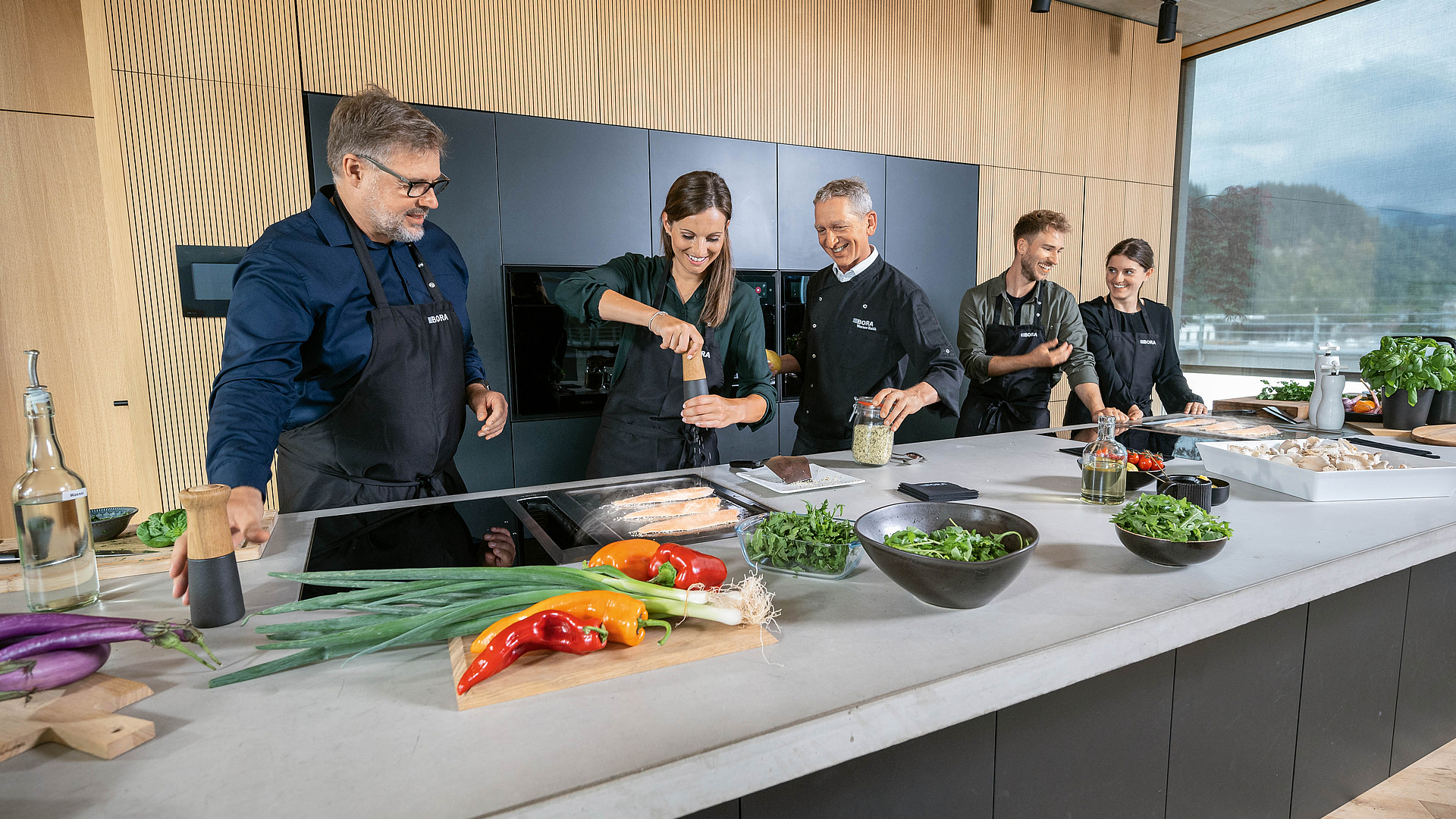
Enjoying food in good company
All over the world, people like eating together on various occasions, whether for family meals, celebratory feasts on public holidays or romantic dates for two. Eating together brings us closer together. We have something to suit everyone.
Food connects people
Contact with people does us good because we humans are social creatures. This became even clearer during the lockdowns to contain the Covid pandemic. What’s more, it is common knowledge that eating makes us happy, particularly because we associate certain meals or flavours with special occasions.
Eating in good company is balm for the soul, especially when the meal is prepared in advance with others. Cooking with others is a chance for discussions, emotions, peaceful moments, new perspectives and interesting impulses. You also enjoy the food you prepared even more consciously. After all, you know what went into it, i.e. responsibly sourced food, lovingly prepared dishes and wonderful moments in the kitchen as a living space.
Fresh, healthy and in moderation
In these times of globalisation, sticking to this precept isn’t always easy, especially when you’re pushed for time. After all there’s no shortage of fast food outlets where you can wolf down your food in a hurry so that you don’t miss your next appointment. If that’s the case for you, take the time to cook with friends during weekends or holidays – it’ll do wonders for your body and soul.
But once again: less is more. On public holidays or when in larger groups we tend to eat more than our bodies actually need. Because when the mood is good, time flies by, and when you’re having a lively conversation you eat faster and pay less attention to your sense of fullness. There’s also the fact that the quantity of food generally exceeds the number of people eating. For example, when cooking for six there’s often enough food for ten people to ensure that no one goes hungry.
Something for everyone
When inviting friends and family for a meal, as well as paying attention to food quantities, you should also make sure that you cater to any vegetarians and/or vegans. Take this opportunity to try out new foods and recipes. But take note of the following:
Not all vegetarians are the same, so find out in advance what your guests do and don’t eat. Many people follow a vegetarian diet, but are perfectly happy to eat fish.
A wide range of alternatives: side dishes and salads work fine without meat or dairy products if you jazz them up creatively, for example with some seasonal veg, nuts or special spices.
Meat substitutes: nowadays, you can find a wide range of healthy, plant-based foods in supermarkets. If you wish, you can therefore prepare classic dishes with soy meat, tofu or seitan.
The internet is teeming with blogs on plant-based recipes and tips on how to prepare them. Almost every dish can be ‘veganised’ – from popular spaghetti bolognese to meatloaf. So, there’s nothing to stop you enjoying a shared cooking experience.
Here are a few recipes that are ideal for cooking in larger groups.